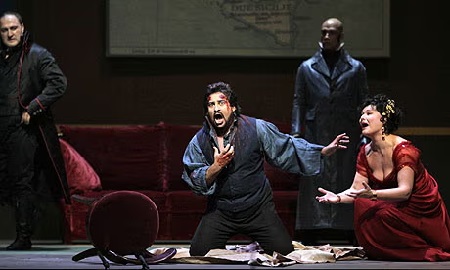Introduction to Tosca or La Traviata NYT
Opera enthusiasts often debate the merits of classic works, with Puccini’s Tosca and Verdi’s La Traviata frequently coming up in discussions. Both operas are staples in the world of opera, celebrated for their emotional depth and dramatic storytelling. This article, inspired by recent New York Times insights, explores the distinctive qualities of Tosca and La Traviata, comparing their themes, musical styles, and lasting impact on the opera world.
Overview of Tosca by Giacomo Puccini
Tosca, composed by Giacomo Puccini, premiered in 1900 and is known for its intense drama and lush orchestration. Set against the backdrop of Rome during the Napoleonic Wars, this opera is a quintessential example of Puccini’s mastery in blending powerful music with compelling narratives.
Plot Summary
- Act I: The opera opens with the diva Floria Tosca visiting a church where her lover, Mario Cavaradossi, is painting a portrait. The jealous police chief, Scarpia, schemes to arrest Mario, using Tosca’s love as leverage.
- Act II: Scarpia captures Mario and demands Tosca’s submission in exchange for Mario’s freedom. Tosca, desperate and distraught, agrees under duress.
- Act III: Tosca learns of Scarpia’s betrayal and Mario’s execution. In a tragic finale, Tosca takes her own life after a desperate attempt to save Mario.
Key Features
- Music: Puccini’s score is marked by its dramatic intensity and memorable arias, including “Vissi d’arte” and “E lucevan le stelle.”
- Themes: Tosca explores themes of love, betrayal, and political intrigue, creating a high-stakes narrative filled with emotional turmoil.
Overview of La Traviata by Giuseppe Verdi

La Traviata, composed by Giuseppe Verdi, premiered in 1853 and remains one of the most performed operas in the repertoire. Set in 19th-century Paris, the opera is renowned for its lyrical beauty and poignant storytelling.
Plot Summary
- Act I: The courtesan Violetta Valéry meets Alfredo Germont at a party and, despite initial resistance, falls deeply in love with him.
- Act II: Violetta and Alfredo’s romance faces challenges from Alfredo’s father, who pressures Violetta to leave Alfredo to preserve his family’s honor.
- Act III: After a period of separation and suffering, Violetta’s health deteriorates. The opera ends with a heart-wrenching reunion, but it is too late for Violetta, who dies in Alfredo’s arms.
Key Features
- Music: Verdi’s score is celebrated for its melodic richness and emotional depth, featuring famous arias like “Libiamo ne’ lieti calici” and “Addio del passato.”
- Themes: La Traviata deals with themes of love, sacrifice, and societal expectations, highlighting the struggles of its protagonist against a backdrop of societal constraints.
Comparative Analysis
Musical Style:
- Tosca showcases Puccini’s mastery of verismo, focusing on realistic portrayals of human emotions and dramatic situations.
- La Traviata exemplifies Verdi’s Romantic style, characterized by its lyrical melodies and emotional expressiveness.
Narrative and Themes:
- Tosca is a high-stakes melodrama with political overtones, emphasizing the intense personal and political conflicts of its characters.
- La Traviata presents a more intimate, character-driven story centered around personal sacrifice and the impact of societal norms on individual lives.
Impact and Legacy:
- Tosca is renowned for its dramatic intensity and has been a staple of the operatic repertoire, known for its compelling portrayal of human desperation and courage.
- La Traviata is celebrated for its melodic beauty and emotional depth, often hailed as a masterpiece of Romantic opera and a poignant reflection on love and social expectations.
Conclusion
Both Tosca and La Traviata hold esteemed places in the world of opera, each offering a unique blend of music and drama that continues to resonate with audiences. Tosca captivates with its dramatic intensity and political intrigue, while La Traviata enchants with its lyrical beauty and exploration of personal sacrifice. As highlighted by recent New York Times coverage, these operas remain timeless classics that offer profound insights into the human condition.
For more insights into these operas and their significance in the operatic canon, consider exploring further reviews and analyses from reputable sources.

Оформление сертификатов на территории РФ является ключевым процессом легальной реализации товаров.
Этот процесс подтверждает полное соответствие нормам и официальным требованиям, что оберегает покупателей от небезопасной продукции.
добровольная сертификация
К тому же, сертификация помогает деловые отношения с партнерами и открывает перспективы на рынке.
При отсутствии сертификатов, может возникнуть юридические риски и сложности при продаже товаров.
Вот почему, получение сертификатов не просто формальностью, и мощным инструментом укрепления позиций организации в России.